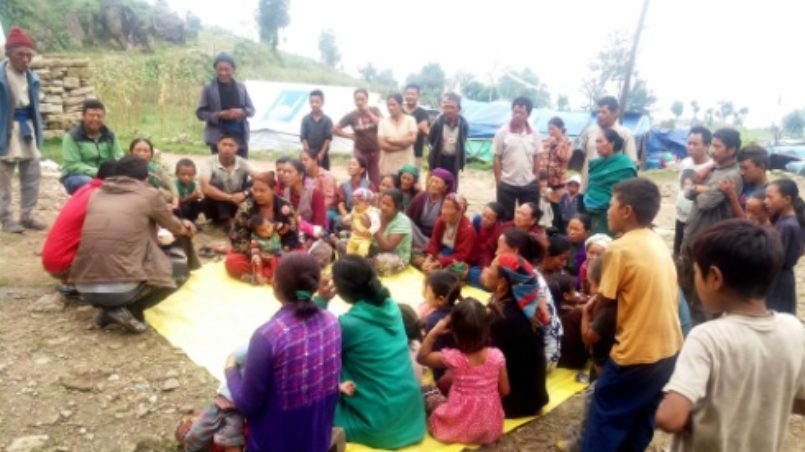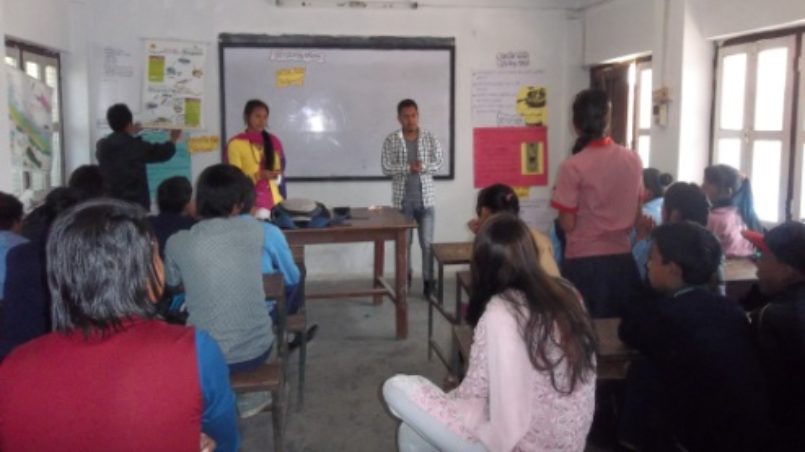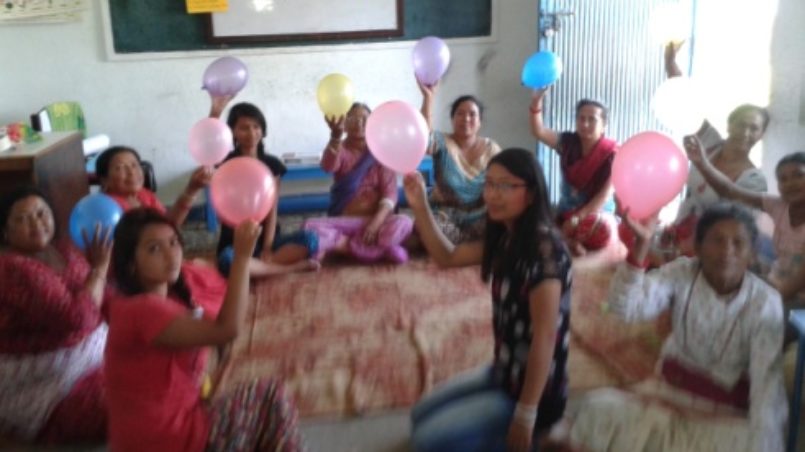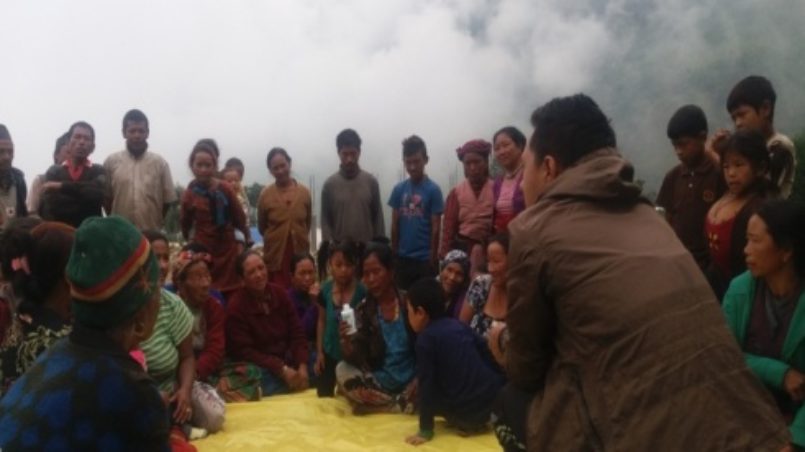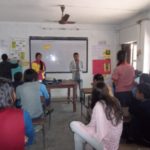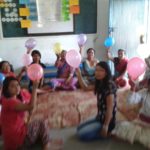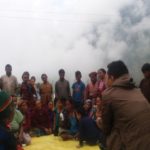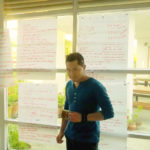Coffee for Health Campaign 2016
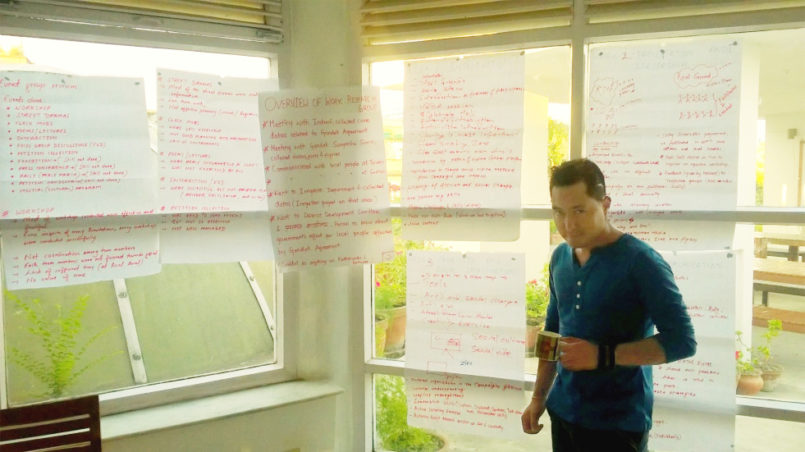
With seven friends (Arjabi Khanal, Bibek Mothe, Bhusan Raj Raut, Nirmala Karki, Bimal Chaulagain, Anuska Maharjhan and Bishal Khadka) I took part in the “Coffee for Health Campaign 2016” for one month.
All the influential key people in the communities, such as teachers, local leaders, ward representatives, FCHVs (Female Community Health Volunteers), social workers, youth representatives, local health workers, women’s representatives, etc. would gather at least once a week and talk about common health problems and also discuss ways and measures to prevent and control these health problems.
Afterwards, they would discuss the cleanliness program that they would take part in at least once a month involving one person from each family. During these weekly gatherings, people would drink their coffee or tea and talk about the subject matters for about half an hour until they finished their coffee or tea.
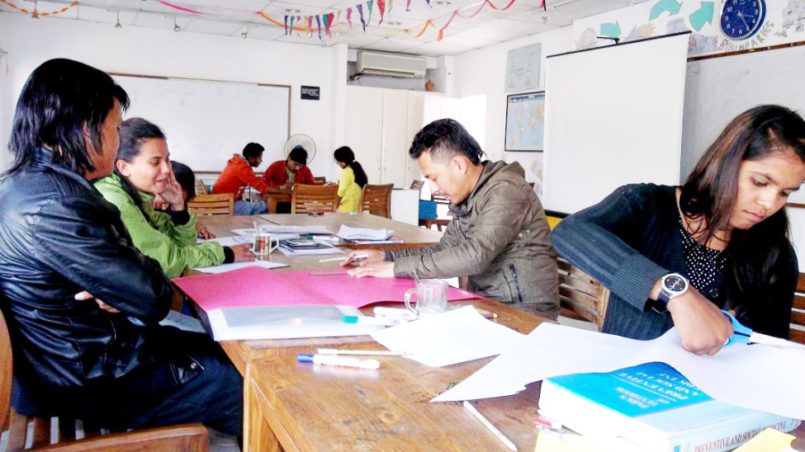
The one-month campaign, entitled “Coffee for Health Campaign 2016”, was planned for four specific towns which had suffered great destruction in the recent earthquake. The campaign ran from 1st January to 2nd February 2016 in Pangapur of Kathmandu district (near Kirtipur), Bakhundole, Badikhel and Chapagaun of Lalitpur district.
For one week we worked in each village and held at least two public health awareness classes in each town within the community. We gathered most of the influential key people in the respective community and a minimum of 30 people attended each health awareness class.
Further, there were some specific objectives, such as to hold public health awareness classes in the communities, to encourage local people to gather once a week in the name of “Coffee for Health” to discuss common public health problems, to offer support to people in an effort to find solutions for their common public health problems, to encourage people to take part in at least two cleanliness programs once a month involving one person from each family and to raise awareness of the proper disposal of waste.
The target audiences of the campaign were all inhabitants of the selected towns, influential key figures in the respective community, all public health professionals and the relevant authorities as well as national and international humanitarian organizations working in those areas, the Village Development Committee and Municipality Secretaries, both local and national government stakeholders who work in the area of health and finally local journalists.
During the campaign, we carried out different types of programs and activities:
- for example, we organized at least two health awareness programs lasting a minimum of three hours per week in each selected town;
- we attempted to raise awareness of the endemic public health problems by means of 25-minute long plays;
- we also gave several 10-minute presentations the aim of which was to inspire and motivate people to hold weekly coffee meetings in order to discuss issues relating to health and cleanliness;
- we held a 30-minute talk with the aim of providing knowledge about various prevailing diseases in Nepal;
- we also held a 20-minute meeting of all participants in order to elect a president, vice-president, secretary and other members to form a “Coffee for Health Committee”, which would be responsible for organizing weekly meetings within the respective community.
We explained the contents of the IEC (Information, Education and Communication) materials prepared by ourselves to make people aware of various health problems. During the campaign, we worked for four days from Monday to Thursday to fully prepare all the materials we required for the health awareness program.
The campaign organizers were given various roles and responsibilities so that it would be easier for every member to complete their own tasks. We visited the field three days per week, on Sunday, Friday and Saturday and held two health awareness programs for a minimum of three hours on Friday and Saturday.
At the end of the campaign, more than 500 people had benefited from our work. We encouraged public people to hold weekly “Coffee for Health” meetings and they also promised to organize a monthly cleanliness meeting on the last Saturday of every month.
We used the SMART (Specific Measurable Accepted Realistic Time Bound) model to set our objectives, the KISS (Keep It Short and Simple) approach to deliver our message to the people and the CAMPAIGN STAR model to develop the campaign plan. The MESSAGE SUN approach to developing the planning of a project was highly useful to me during the entire course of conducting the campaign.
The human rights based approach was also practised and the leadership and facilitation skills that I had gained in my training at Global Platform Nepal were helpful in handling the team, managing the conflicts within the team and in making the sessions very interactive and meaningful.
The workshop designing skills and theater and event organizing practices helped in designing the programs; writing the scripts and dividing the roles for the various street events that we held in the course of the campaign was an easy task for me. The strategy to effectively use social media also helped me significantly to raise more awareness of the message of our campaign through different means of communication.
Concepts and ideas, such as creating MEMEs, the Power of Story, Designing Zines, etc., which I had learned from the Global Change Lab, were extremely useful at every stage of the campaign and, therefore, I can say that the Global Change Campaign Course 2015 greatly helped me to organize and run the campaign. I am very grateful to the Global Platform Nepal.

